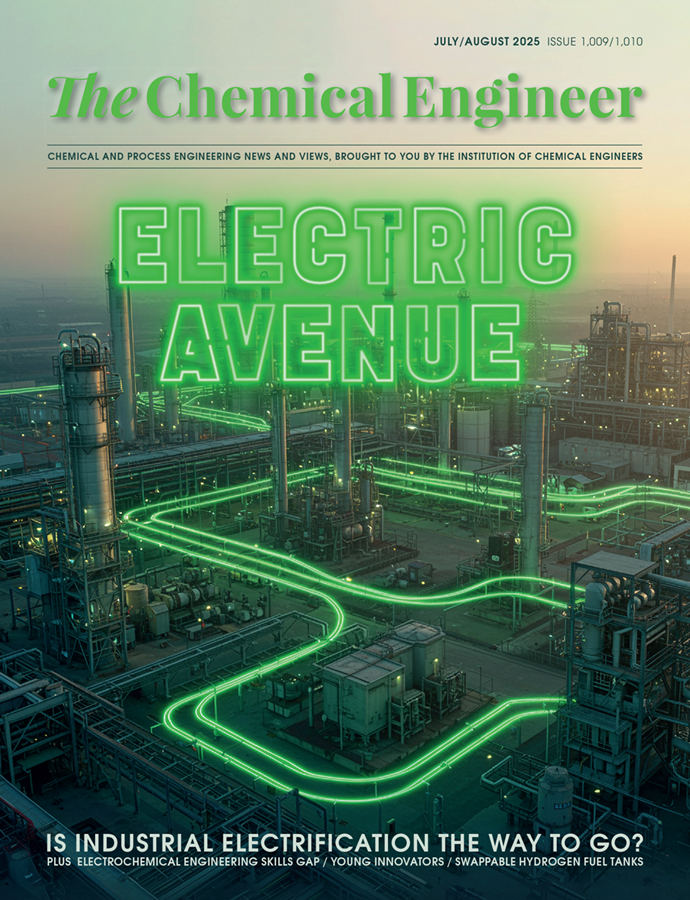The UK engineers working to kickstart the hydrogen economy

MARK SYMES, professor of electrochemistry and electrochemical technology at the University of Glasgow, is researching whether it’s possible to develop an electrolyser that produces hydrogen directly from seawater. His work explores a novel type of electrolysis that could be safer, more tolerant of various water sources, and reduce compression requirements.
Symes is one of ten researchers awarded a share of £3m (US$3.7m) from the UK Hub for Research Challenges in Hydrogen and Alternative Liquid Fuels (UK HyRES), which is run out of the chemical engineering department at the University of Bath.
The hub was set up in 2023 to coordinate research that will accelerate the development of hydrogen technology that could help the UK meet its net zero goals. The R&D programme is divided into four technical themes: production; storage and distribution, use, and alternative liquid fuels. Symes’ research falls under the production banner.
“Decoupled electrolysis allows the user to make hydrogen and oxygen from water in different places, at different times, and at rates that are not connected,” Symes says.
“In a decoupled electrolyser, we have an electrochemical cell that produces oxygen at the anode, like a conventional electrolyser, but at the cathode we don’t make hydrogen. Instead, the electrons and protons from water oxidation are used to reduce and protonate a dissolved redox mediator.”
The mediator would then be removed and put in a reactor where it would be exposed to a catalyst to spontaneously release the hydrogen. The mediator could then be returned to the electrochemical cell to be used again.
“The safety and compression advantages come about as you make the hydrogen outside the electrochemical cell. So that means that the oxygen and hydrogen can never mix, which is great.
“It also means that you can design a hydrogen generation chamber to be optimised for high pressure hydrogen production, which is much harder to do if the hydrogen is made directly inside the electrolyser.
“Tolerance to different water feeds comes about as the electrochemical cell used in decoupled electrolysis has electrolyte solutions on both sides of the membrane, so any ions in the feedwater can move freely from one compartment, through the membrane, and into the other compartment. They don’t block the membrane like they would in, say, a proton exchange membrane cell.”
The team is investigating mediators that could do the job with seawater. If they can identify suitable candidates, they plan to produce them at kilogram scale and test them in a prototype device operated by Clyde Hydrogen Systems, which is already trying to develop a decoupled electrolyser that runs on freshwater. Producing hydrogen from seawater would be far more advantageous – there’s much more available – allowing production to occur on repurposed offshore oil and gas facilities or nearer wind farms during surplus energy generation.
Separate efforts are already underway investigating how technologies can be combined to produce hydrogen offshore. Among them is the Dolphyn Hydrogen project that was piloted off the UK last year. It involves a single platform equipped with a wind turbine to power a desalination unit, which produces freshwater for electrolysis, splitting it into hydrogen and oxygen.
On his team’s coming research priorities, Symes says: “There are a bunch of really knotty and really interesting chemical engineering challenges in the project. We need to fine-tune the anode potential so that we make oxygen and not chlorine. How will the flow rates of the anode and cathode liquid streams impact the current density that can be supported? How will the introduction of chloride and sodium affect the hydrogen release process and what hydrogen generation reactor designs or operation protocols will allow us to optimise the process for seawater? Will sodium and chloride accumulate in the mediator solution, to the extent that we need to develop processes for removing excess sodium chloride from the mediator solution?”
This article is adapted from an earlier online version.
Recent Editions
Catch up on the latest news, views and jobs from The Chemical Engineer. Below are the four latest issues. View a wider selection of the archive from within the Magazine section of this site.




